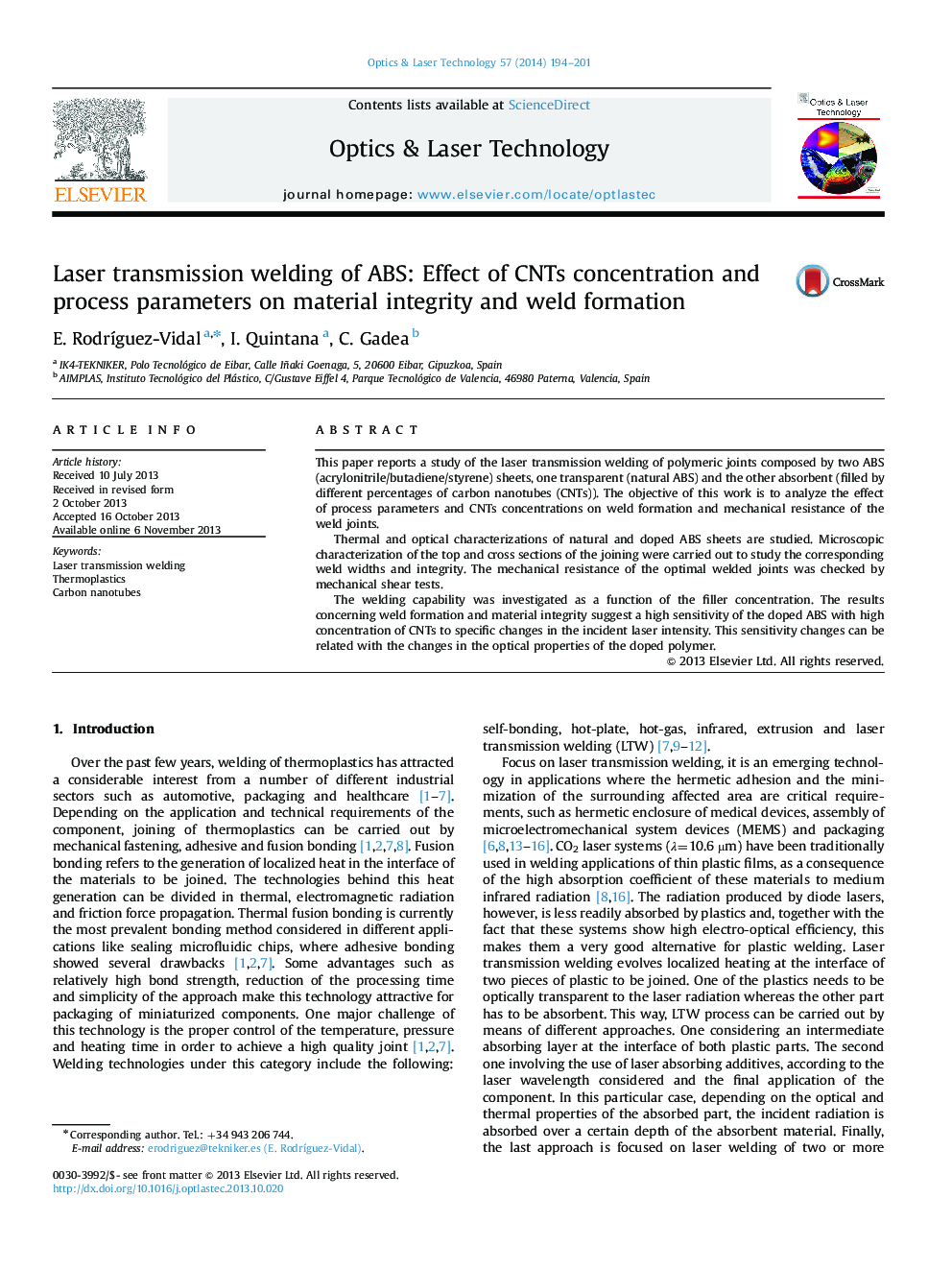| Article ID | Journal | Published Year | Pages | File Type |
|---|---|---|---|---|
| 734403 | Optics & Laser Technology | 2014 | 8 Pages |
•Glass transition temperature for doped ABS did not change with CNT concentration.•The optical properties for doped ABS change with the CNT concentration.•Laser transmission welding of ABS shows two regimens depending on the CNTs content.•More variable mechanical properties are observed for ABS with high CNTs content.•Neither CNTs content reveal clear correlation between weld width and shear force.
This paper reports a study of the laser transmission welding of polymeric joints composed by two ABS (acrylonitrile/butadiene/styrene) sheets, one transparent (natural ABS) and the other absorbent (filled by different percentages of carbon nanotubes (CNTs)). The objective of this work is to analyze the effect of process parameters and CNTs concentrations on weld formation and mechanical resistance of the weld joints.Thermal and optical characterizations of natural and doped ABS sheets are studied. Microscopic characterization of the top and cross sections of the joining were carried out to study the corresponding weld widths and integrity. The mechanical resistance of the optimal welded joints was checked by mechanical shear tests.The welding capability was investigated as a function of the filler concentration. The results concerning weld formation and material integrity suggest a high sensitivity of the doped ABS with high concentration of CNTs to specific changes in the incident laser intensity. This sensitivity changes can be related with the changes in the optical properties of the doped polymer.
